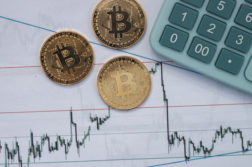Siam Commercial Bank PCL (BKK:SCB), one of the companies using Ripple’s blockchain software in East Asia, is adding two new currencies to its remittance business.
SCB will add euros and British pounds. This move, which comes in reaction to higher inflows of GBP and EUR, could make life easier for anyone wishing to make cross-border payments.
The additions will become final in Q3. At the same time, SCB hopes to make its partnership with Ripple independent of the central bank, whose “sandbox” it has been using for experimentation.
This is good Ripple news on a day when XRP prices are slipping. But more importantly, it is part of a larger storm brewing in the cryptocurrency market.
You see, enterprise blockchains are coming to the forefront of technology. Companies like Ripple are providing distributed ledger technology (DLT) solutions to banks and other firms, rather than trying to convince average consumers to adopt a digital currency.
This approach to spreading blockchain solutions was hidden in the margins for a long time.
Bitcoin’s model, which dominated the conversation, required stores and restaurants to accept it as legal tender. You can still find articles justifying Bitcoin’s high price by citing Subway’s (the sandwich restaurant) acceptance of BTC payments.
But progress has slowed on that front. There are manifold issues, including:
- rising transaction costs,
- long wait times,
- and extreme volatility.
All of these conditions have discouraged retailers from using Bitcoin. In fact, continued volatility has transformed Bitcoin from an aspiring currency to a commodity. This may seem like a minor difference, but it has enormous implications for how Bitcoin is regulated.
Ripple can escape this fate because XRP doesn’t touch consumer hands during payments. It is neither a commodity nor a currency. It is more like software that banks use to communicate to each other, meaning that it should be subject to much less regulation than Bitcoin.
This is generally true of enterprise blockchains.
Analyst Take
I continue to believe that XRP prices are undervalued, in part because they are relatively immune to regulatory action. I also believe investors will realize this as 2018 progresses.
And because I believe these two things, I cannot help believing in our $10.00 Ripple price prediction for 2018.
The same logic applied when Ripple prices were stuck at $0.20 last year. Look how that turned out: XRP ended the year as the most lucrative cryptocurrency of 2017!
Now that I see the same opportunity, am I supposed to forget the lessons that worked last time?
Read more at:
www.profitconfidential.com








